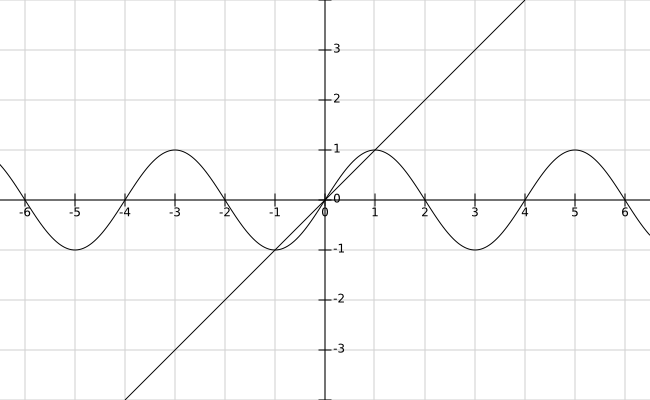Question #22e71
2 Answers
Please see below.
Explanation:
Find the points of intersection:
There isn't a nice algorithmic approach to solving this. A bit of experimenting (trial and error) will eventually reveal that
Looking at a sketch of the graph should convince us that there are no other solutions.
For one thing, there cannot be any solutions outside the range of sine, which is
On
To see this, we might test at
If the inequality were to be reversed, there would have to be a zero between. (Intermediate Value Theorem.)
In fact the inequality does go the other way on
On
By symmetry, it suffices to find the area on
So find
The total are between the curves is
Explanation:
Consider the function:
we have:
so the line joining the extremes of the graph of the function
Now evaluate:
As the function is concave in the interval, its graph lays above the line joining the two extremes, which means:
The area comprised between the curves in this interval is then:
For symmetry reasons the area comprised between the curves in the interval [-1,0] is the same:
while externally to the interval the two graphs never cross as:
Then the area comprised between the curves is:



